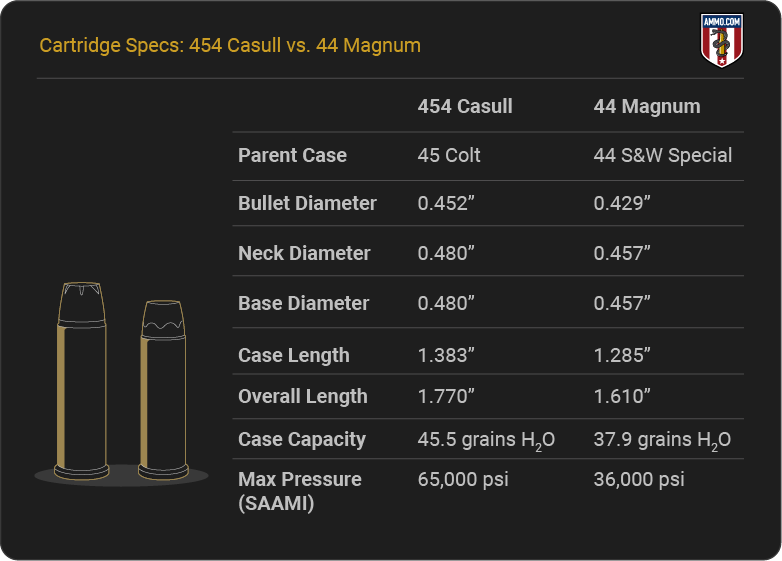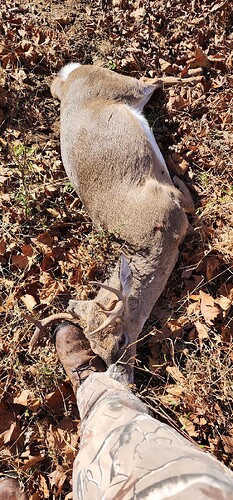The 454 Casull and 44 Magnum are powerful magnum revolver cartridges. The 454 Casull packs considerably more punch than the 44 Mag, but that doesn’t mean Dirty Harry’s S&W Model 29 is weak or obsolete.
Let’s discuss just how much more powerful one round is during our 454 Casull vs. 44 Mag discussion, as well how that extra oomph affects performance for the worse.
What Are the Differences Between the 454 Casull and 44 Mag?
At first glance, the differences between the 454 Casull and 44 Mag seem minuscule. As we dive deeper, we’ll discover how those apparently tiny differences significantly affect performance.
We’ll begin by comparing the cartridges’ specifications, and continue by discussing recoil, stopping power, and several other important aspects of performance. Finally, we’ll tally the winner of each section to determine if more power really is better.
Cartridge Specs
The 454 Casull’s parent case is the 45 Colt. Its bullet diameter is 0.452”, and its neck and base diameters are 0.480”. Its case length is 1.383”, making the round’s overall length 1.770”. Its case capacity is 45.5 grains H2O.
The 44 Magnum is based on the 44 Smith & Wesson Special. It features a bullet with a 0.429” diameter, 0.457” neck and base diameters, and a 1.285” long case. The cartridge has an overall length of 1.610”, and 37.9 grains H2O case capacity.
These differences contribute to the rounds’ drastic difference in max pressure. The 454 Casull max pressure is 65,000 psi, while the 44 Mag is “only” 36,000 psi. The 44 Mag is no slouch on the handgun max pressure spectrum – the 454 Casull’s maximum pressure is just extremely high.
Let’s see how these differences affect real-world performance.
Recoil: 454 Casull vs. 44 Mag
When comparing two cartridges, I often begin with their recoil. The round that kicks harder causes sharper muzzle flip, which can lead to less accurate follow-up shots. Strong kick can also worsen accuracy by causing the shooter to flinch (i.e. reflexively jerking their trigger and firearm off target in anticipation of recoil).
Neither of these rounds is known for its lack of recoil. Felt recoil is subjective and varies from shooter to shooter. Rather than felt recoil, let us focus on free recoil, which is the measurable product of four variables: projectile weight, propellant weight, muzzle velocity, and firearm weight.
When firing a 260 grain bullet at 1,798 fps muzzle velocity from a 3.5-pound Ruger Super Redhawk revolver, the 454 Casull generates 27.58 ft-lbs of recoil energy.
When a 240 grain 44 Rem Mag bullet achieves 1,200 fps muzzle velocity from a 3.5-pound revolver, recoil equals 18.5 ft-lbs. That’s significantly less, and no one would honestly consider the 44 Mag a weak round.
The 44 Mag wins this section because it has considerably less recoil than the 454 Casull.
Continue reading 454 Casull vs. 44 Magnum: Is More Power Always Better? on Ammo.com

